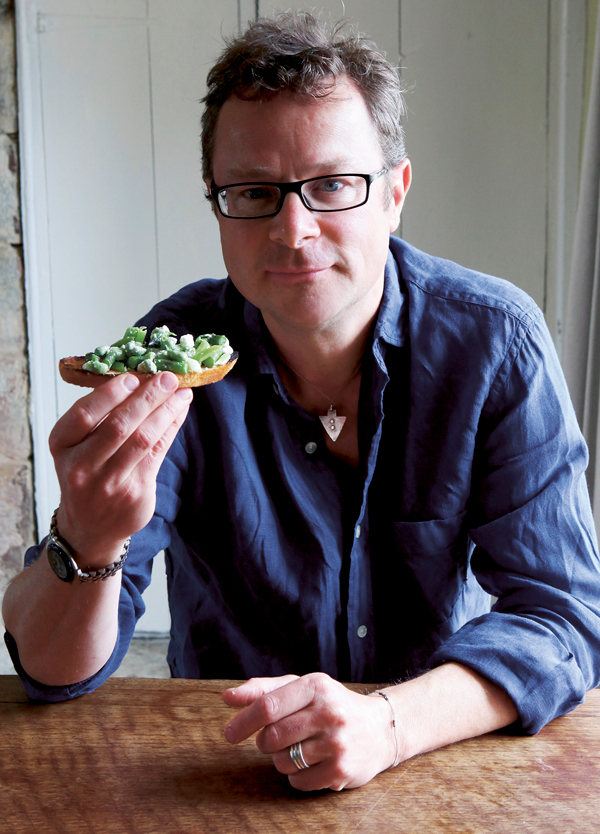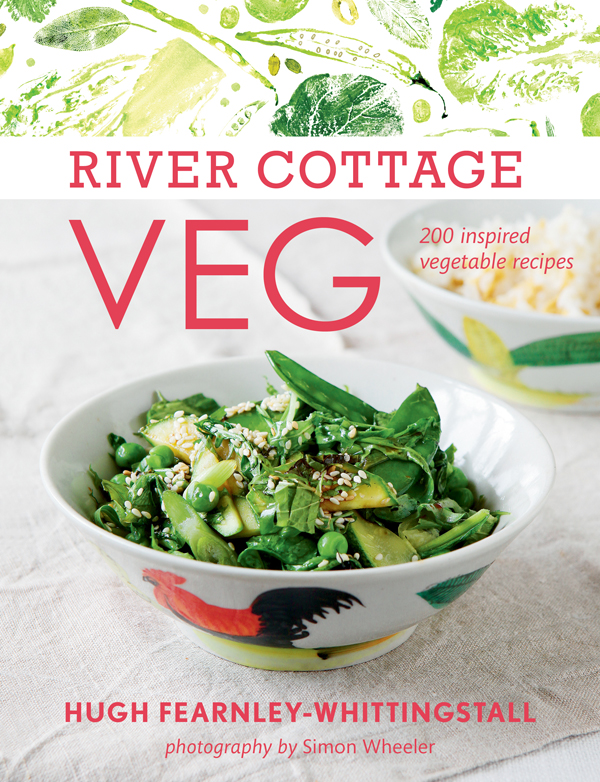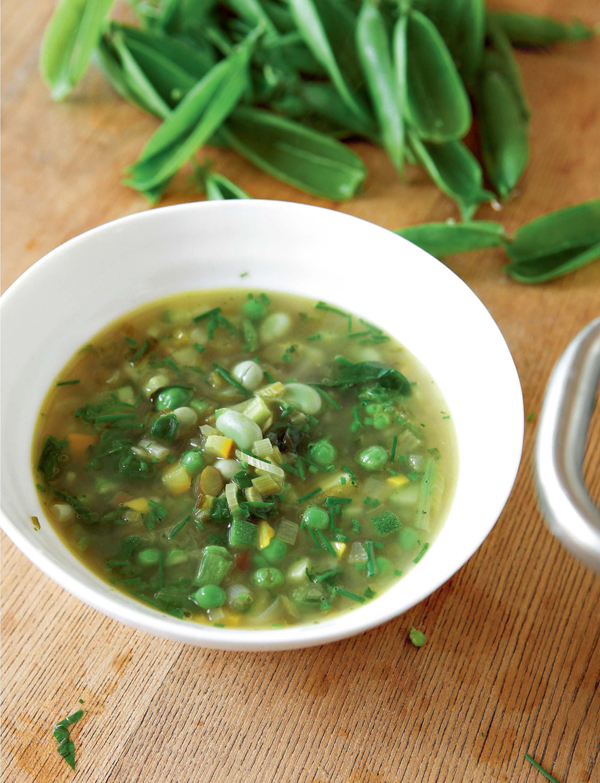
Homesteading advocate, prolific author, and British television star Hugh Fearnley-Whittingstall knows that few of his many dedicated fans would expect him to get excited about eggplant. Or about bean and spelt soup, kale and onion pizza, stir-fried sesame cauliflower, or potato-and-tomato kebabs, to name just a few of the recipes in his eighth and latest book, River Cottage Veg: 200 Inspired Vegetable Recipes. After all, Fearnley-Whittingstall, who made his name with the River Cottage series of down-to-earth, dirt-on-your-wellies guides to the homegrown good life, is best known for his unabashed nose-to-tail love of meat and fish, coupled with an outspoken dedication to humane, sustainable ranching and animal husbandry. The River Cottage Meat Book and its companion, The River Cottage Fish Book, are must-have how-tos for every hands-on ethical omnivore from Notting Hill to Bernal Heights.
But on a recent visit to San Francisco, Fearnley-Whittingstall acknowledged the difference that climate change and the world's unbridled appetite for animal protein has made in his outlook. Addressing a standing-room-only crowd at Omnivore Books in Noe Valley, the scarf-wearing author, while still a confirmed omnivore, encouraged all of us to start eating our fruit and veg "with gay abandon." Doing this book, he told the crowd, was "really a life-changing experience, and now, as a cook, I'm in a different place than I was before I did this. The transformation for me was just, you have to put meat and fish on one side, for a bit...and give some full attention to the veg. And then we will realize that all the things that we do in reverence to meat and fish--the spices we use, the herbs, the techniques of cooking that we bring to these ingredients--we can do all that with veg, and when we do, we have an even richer palette to play with."
So we can roast veg, we can barbecue it, we can grill it, we can deep-fry it, and of course we can eat it raw, but that doesn't mean only one way. We can slice it very very thinly and muddle it up with other ingredients, we can mix the raw and the cooked, we can mix the roots and the leaves, we can sprinkle over the top spices whole and toasted. And then we can really start to play with this extraordinary range of ingredients.
So, even if you came here this evening hoping to talk about pork bellies and roasted bones and smoked fish of one kind or another: Hey, I love those conversations! Let's have them, let's do that. But please also have a think about what is actually a major issue. I don't want to be preachy about it; what I want to do is just tempt you, and tell you that vegetables are delicious and here are some lovely recipes and I hope you enjoy them."
This isn't quite 24/7 vegetarian food; many of the dishes, especially the pastas, salads, and soups, are light and simple, the food of someone taking a break from heavier meat-based dishes. Sometimes, taking out the meat allows for creative revitalization of comfort food standards, as in the Vegeree, a veggized version of the Anglo-Indian breakfast dish kedgeree, in which curried roasted eggplant and zucchini replace the typical smoked haddock to make an entirely new and appetite-whetting dish. Some dishes, though, just feel reduced, like the Fish-free Salade Nicoise, which sorely misses its tuna; without it, this toss of lettuce, green beans, potatoes, and too many wedges of egg evokes no sweltering afternoon in Provence.
But for the omnivores on your list looking to eat more veg, or expand their repertoire of intriguing, appetite-whetting vegetable sides or Meatless Monday offerings, River Cottage Veg should do the trick. It's hard not to love a book with a recipe for DIY Pot Noodles, made healthy with quick-cooking egg noodles, lots of shredded fresh vegetables and a hot-water broth seasoned with soy sauce, lime juice, curry powder, garlic and ginger instead of the desiccated carrot cubes, MSG, salt, and sugar of your typical office-lunch Cup o' Noodles. True to his word, Fearley-Whittingstall isn't afraid to give his vegetables the same reverence--and big-flavor treatments and techniques--as his meats and fish. Plus, who wouldn't park themselves next to the appetizer table when it's loaded with Beet and Walnut Hummus, Carrot Hummus, and a ridiculously delicious-sounding (and mostly pantry-based) mixture called Cambodian Wedding Dip? Made from sauteed mushrooms, chiles, garlic, curry powder, peanut butter, and coconut milk, it should replace the plastic tubs of Trader Joe's anything at every barbecue you go to this summer. And watch out: those Spicy Merguez Oven Fries with Yogurt Dip will knock even the best potato chips into the shade.

